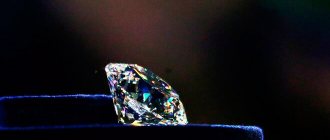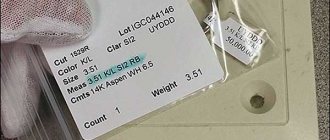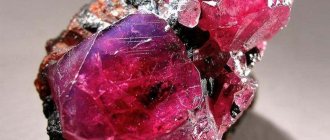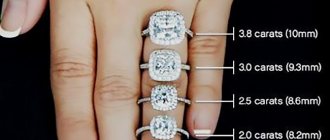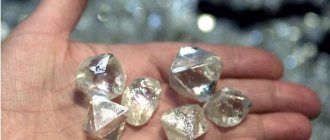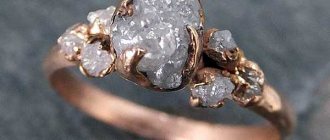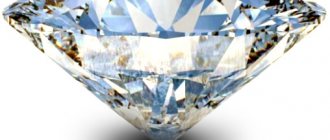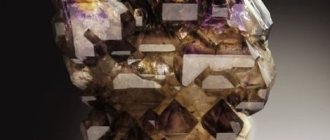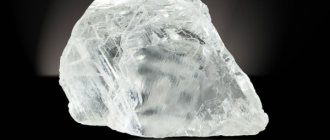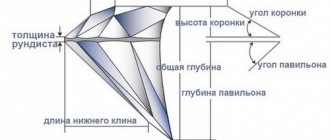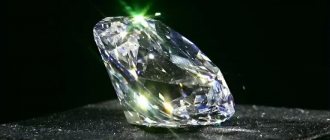As the name suggests, the cut (round, princess, radiant, etc.) describes the shape of the diamond, primarily as seen from above.
All cut shapes have their own parameters and characteristics, but in general, the beauty of a diamond’s shape is a matter of individual taste.
The brilliance and play of a diamond depend on the quality of polishing and cutting, the shape and proportions of the stone.
All of these are components of the final cost of the cut gemstone. A classic diamond is round in shape and has 57 facets. This shape allows the stone to reflect the vast majority of light. In addition, a stone of this shape boasts truly excellent play.
It is not surprising that diamonds of this shape are more common than others and are very expensive.
Rice. Yakut diamonds of various cut shapes
But round is not the only shape for diamonds. There are many varieties of cut shapes in the world. The so-called “fantasy” forms are very popular. Each of them, be it “marquise”, “heart”, “princess”, “pear”, “oval”, “emerald” or “baguette”, makes a unique impression, fitting perfectly into almost any jewelry composition.
Cut shape Circle
The classic round shape is renowned for its play and the greatest return of white to the person viewing the diamond. More than 3/4 of all diamonds sold are stones cut in accordance with this standard shape. There are 3 varieties of round shape, with 17, 57 and 85 edges.
Moreover, a smaller number of facets is inherent in the cutting of diamonds with the lowest weight, while large stones are processed into a shape with 85 facets.
Round Diamond Catalog
Catalog of rings with round diamonds
Diamonds are classified into clarity groups depending on the presence of internal characteristics (inclusions, cracks, surface defects, the elimination of which will lead to significant weight loss), their quantity, location, brightness and color (characteristics visible through a 10x magnification lens are taken into account).
The clarity group of a diamond according to the Russian grading system (like the color group) depends on the weight of the stone. Thus, for small stones (up to 0.29 carats inclusive) there are fewer color groups than for medium and large ones (from 0.30 carats and above). In addition, for round cuts Kr-17 and Kr-33, regardless of the weight of the stone, a smaller number of purity groups are allocated.
Small Kr-17 stones are classified into 6 purity groups, and small Kr-57 diamonds into 9 groups. For medium and large stones there are 12 purity groups (see table). From the table it follows that a diamond with a clarity of 5 weighing up to 0.29 carats corresponds to a clarity of 7 for medium and large stones. Those. Defects and coloration that are difficult to see with the naked eye are detected only with characteristics of 7/7 (for medium and large stones). A trained eye, without the help of instruments, notices defects and color with characteristics of 6/6. Therefore, when buying large stones, it would be more correct to pay attention to the color and size that catch your eye.
Purity assessment is made at 10x magnification or with the naked eye. Defects that are detectable at higher magnification but not visible at 10x magnification are not taken into account. When assessing the impact of defects on purity, the size, nature, number, location, brightness/color of internal characteristics, and in some cases external characteristics are taken into account. To determine the position of a defect in a stone, the volume of the diamond is mentally divided into three zones of equal volume: central (the volume of the diamond, when viewed from above, located under the platform), middle and peripheral (near the girdle). According to established traditions, in Russia the clarity of a diamond is called quality or defectiveness. On the contrary, in world practice (rating systems GIA, IDC, etc.) defects in cleanliness are called characteristics.
Diamond clarity can be understood as the stone's freedom from internal inclusions and blemishes, or as the stone's relative position on the scale of a diamond without flaws or a diamond with flaws.
When we talk about a diamond's clarity, we are talking about having distinctive characteristics on the outside and inside of the stone. While most of these characteristics are an integral part of a rough diamond, occurring in the earliest stages of crystal formation underground, some are a result of the intense pressure the diamond is subjected to during the cutting process. If you imagine the incredible pressure with which a diamond is born, it is not at all surprising that many diamonds have inclusion cracks, defects, air bubbles and particles of foreign mineral rocks, both on the surface and inside the stone. The GIA grading system distinguishes 11 clarity grades, ranging from Intrinsically Flawless, a diamond that has absolutely no defects or inclusions even under 10x magnification, to Imperfect, a diamond that has serious flaws and inclusions visible even to the naked eye. glance. Cleanliness characteristics are classified as inclusions (internal defects) or surface defects. A defect (characteristic) is considered internal even if it appears on the surface of the diamond, if it cannot be removed by repolishing the stone without losing weight. All other things being equal, diamonds without defects are considered the most valuable. Diamond clarity is a collective concept that defines the transparency, absence or extent of internal or external defects of a diamond. The clarity of a diamond shows how easily light can penetrate inside the diamond, reflect off its facets, and scatter into multi-colored rays. The purity of a diamond determines its rarity, attractiveness and durability, and therefore its value. Diamond was formed in the depths of the Earth gradually over several time phases. Moreover, the conditions - temperature, pressure, environment - were not always the same. This gives rise to natural features often referred to as internal diamond defects. Since a diamond is a creation not only of nature, but also of man, it may have external defects that appear or form during the diamond manufacturing process. The division into internal and external defects is conditional, since, for example, an internal crack can be formed as a result of processing a diamond, and an external defect in the form of a left natural edge is of natural origin. Diamonds, like most other minerals, have natural inclusions and defects in their structure. The fewer there are, the more valuable the diamond. Absolutely transparent diamonds are practically never found in nature; we can only talk about the purity of a diamond at 10x magnification. If no defects are found, the stone is recognized as a pure diamond. It is not a fact that with higher magnification no inclusions will be detected either, but they are not taken into account in the cost estimate.
The procedure for describing defects and their characteristics when classifying diamonds into clarity groups in accordance with the Russian grading scale (GOST R 52913-2008)
- quantity
- size
- view
- location
Terms used in defining and describing the clarity of a diamond: in accordance with the Russian grading scale (GOST R 52913-2008)
internal defects - internal features located entirely inside the diamond or partially extending onto its surface, visible to the naked eye or at 10x magnification; external defects - defects located on the surface of the diamond and slightly penetrating deep into it
Terms used to describe internal and external defects in diamonds
dot - the smallest defect that has no volume inclusion - a defect that looks like a three-dimensional object of various sizes, shapes and colors located inside the diamond stripe - a defect in the form of a thin line crack - a break in the diamond that is completely internal or extends to the surface cloud - foggy (whitish) an area formed by an accumulation of tiny defects image visible to the naked eye - an image visible to the eye of a person with normal vision or through glasses (lenses) that correct poor vision to normal
Terms used to describe the extent of internal, external, polishing defects (working marks) and the degree of deviation from perfect symmetry of diamonds
with great difficulty visible (barely visible) defects - defects and deviations from perfect symmetry, which are very difficult to detect during a long and careful study of the diamond from all sides at 10x magnification; hardly visible defects - defects and deviations from perfect symmetry, which are difficult detect during a long and careful study of the diamond from all sides at 10x magnification visible defects - defects and deviations from perfect symmetry, which can be detected by carefully viewing the diamond from all sides at 10x magnification easily visible defects - defects and deviations from perfect symmetry, which can be easily detected by carefully viewing the diamond from all sides at 10x magnification, including clearly visible defects that are - defects and deviations from perfect symmetry, which can be easily detected at 10x magnification , including very clearly visible defects - defects and deviations from perfect symmetry, which are very easy to detect at 10x magnification, including easily visible with the naked eye
Terms used to describe the size of internal, external and polishing defects (working marks) of diamonds
the smallest defects - defects that do not have a discernible volume, having the form of dots or thin stripes, according to the degree of manifestation - with great difficulty visible (barely visible) small defects - defects that do not have a discernible volume or have a very difficult to distinguishable volume, according to the degree of manifestation - hardly visible minor defects - defects that have a difficult-to-see volume, according to the degree of manifestation - visible small defects - defects that have a discernible volume, according to the degree of manifestation - easily visible large defects - defects that have the appearance of three-dimensional objects, according to the degree of manifestation - clearly visible very large defects - defects that have the appearance of three-dimensional objects, in terms of degree of manifestation - very clearly visible
Determination of diamond clarity group according to TU 25-07.1319-77
| characteristics of purity group | cleanliness group | ||
| Kr-17 | less than 0.29 carats | more than 0.30 carats | |
| without defects | 1 | 1 | 1 |
| having defects: in the central zone there is one bright point, visible only when viewing the diamond from the pavilion; or in the middle and peripheral zones no more than two subtle light dots or one subtle stripe | 2 | 2 | 2 |
| having defects: in the central zone no more than three insignificant light dots or in the middle and peripheral zones no more than two defects in the form of insignificant dark dots or stripes | 3 | 3 | |
| having defects: in the central zone no more than two small dark spots, or in any zone no more than four small light spots, or no more than two stripes, or one strip and three small light spots, or in the peripheral zone one minor crack | 4 | ||
| having defects: in the central zone one small light cloud or one small crack, or no more than six defects in the form of small light stripes; or in the middle and peripheral zones no more than three minor cracks | 3 | 4 | 5 |
| having defects in any zones: no more than eight small scattered light defects in the form of dots, stripes, small cracks, bubbles, microseams and growth lines, or up to five small dark dots, or one minor graphite inclusion | 5 | 6 | |
| having defects in any zones: no more than eight small scattered defects (including those faintly visible to the naked eye) in the form of dots, stripes, small cracks, dust clouds or one small graphite inclusion | 7 | ||
| having numerous defects: in any zones no more than two small graphite inclusions or no more than two small cracks, or one small cloud in combination with a graphite inclusion, or one small crack in combination with a graphite inclusion, or several small cracks in combination with a graphite inclusion | 7a | ||
| having numerous defects: in any zones except graphite inclusions, including in the form of cracks visible to the naked eye | 4 | 6 | 8 |
| having numerous defects: in any zones in the form of graphite inclusions, or graphite inclusions in combination with cracks visible to the naked eye | 9 | ||
| having defects: in any areas of various types, visible to the naked eye, and transparent to view at least 60% of the diamond pavilion facets | 7 | 10 | |
| having defects: in any zones of various types, visible to the naked eye, and less than 60% of the diamond pavilion facets are transparent for viewing | 5 | 8 | 11 |
| dived | 6 | 9 | 12 |
Determination of diamond purity according to GOST R 52913-2008; this classification is currently used
characteristics of the purity group purity group central zone middle zone peripheral zone large and medium small less than 0.29 carats Kr-17 without internal and external defects without internal and external defects without internal and external defects 111 one tiny defect in the form of a light point, visible only when viewing the diamond from the side of the pavilion—— 222 — no more than two tiny defects in the form of light dots222—one small defect in the form of a stripe222no more than three small defects in the form of light inclusions—332—no more than two small defects in the form of dark inclusions332—no more than two small defects in the form of a stripe 332no more than two small defects in the form of dark inclusions— —432no more than four minor defects in the form of light inclusions432no more than two minor defects in the form of stripes432no more than one minor defect in the form of stripes and three minor defects in the form of light inclusions432——one minor defect in the form of a crack432one minor defect in the form of a light cloud——543one minor defect defect in the form of a crack——543no more than three minor defects in the form of dark inclusions——543no more than six minor defects in the form of light inclusions and stripes 543—no more than three minor defects in the form of cracks 543no more than eight small scattered defects in the form of light inclusions, stripes, cracks , transparent volumetric inclusions653up to five minor defects in the form of dark inclusions653one minor defect in the form of a volumetric dark inclusion653no more than eight small scattered defects in the form of light and dark inclusions, stripes, cracks, clouds, transparent volumetric inclusions753one small defect in the form of a dark inclusion753no more than two small defects in in the form of dark inclusions7a53no more than two small defects in the form of cracks7a53no more than one small defect in the form of a cloud in combination with a small dark inclusion7a53several small defects in the form of cracks in combination with a small dark inclusion753numerous small defects in the form of various inclusions and cracks864one large crack864numerous large defects in the form of various inclusions and cracks964numerous large defects in the form of various inclusions in combination with cracks964numerous very large defects of various types and transparent to view at least 60% of the faces of the diamond pavilion1074numerous very large defects of various types and transparent to view from 60% to 30% of the faces of the diamond pavilion1185numerous very large defects of various less than 30% of the diamond pavilion facets are visible and transparent for viewing 1296Trilliant cut shape
A wedge cut with a triangular shape. There are several names for this shape: trillions, triangles or trillians. The shape and number of facets of these diamonds can vary significantly, but trillions have one thing in common - an invariably triangular shape.
Trilliates first appear in Amsterdam. This type of cut does not have any restrictions in terms of design - preference is given to the personal taste of the cutter and the natural parameters of the stone itself. The more traditional shape has sharp corners, but more rounded options are also possible.
Very often, trillions are found as side inserts in rings that have a larger stone. The width and length values should be as close as possible, only small deviations are allowed.
Trilliant diamond catalog
Trilliant diamond ring catalog
Curse of the Necklace
The “Heart of the Ocean” pendant, which sparks serious passions in the film, had its own prototype, and it was rumored to bring nothing but misfortune to its owners.
The jewelry existed in reality - its prototype was the legendary Hope Diamond, which was called cursed due to the fact that all its numerous owners - aristocrats and bankers - died a tragic death, went bankrupt or went crazy.
In James Cameron's film, the tragic fate of the Titanic and the fatal diamond are combined.
Radiant cut shape
A wedge cut of a rectangular or square shape with an octagonal outline is the so-called radiant. All the best of the round diamond (play and spectacular brilliant cut) is combined here with the elegance of the emerald shape.
When cutting this shape, an increase in the weight of the gemstone is inevitable: in order to make the diamond play more intense, it is necessary to add depth to the pavilion. Radiant is the most common cut for large diamonds. This form also has the property of improving the color of fancy stones.
Radiant diamond catalog
Radiant diamond ring catalog
Diamond "Princess" rectangular shape
For several centuries, rectangular diamonds were cut using step cuts, which emphasized the purity and transparency of the diamond. After the advent of the brilliant cut, cutters began to look for a new form of cut that could match the “game”, sparkle and brilliance of the round brilliant. In the 70s of the last century, the “Baryon” and “Quadrillion” diamond cuts were invented, which became the predecessors of the “Princess” - a square or rectangular diamond with sharp corners.
Princess cut rectangular diamonds
The “Princess” diamond follows the natural shape of part of the octagonal diamond crystal (if you turn the “Princess” upside down with a spike and down with a platform, it will resemble a pyramid), therefore, when making a “Princess”, the weight loss of the original diamond is less compared to a round diamond, which is reflected in cost of the diamond. Most of the weight of the “Princess” is concentrated in the pavilion - the lower part of the diamond, so the “play” of light is concentrated in the depths of the stone, which looks mesmerizingly attractive. Due to its beauty and more attractive price compared to round diamonds, the Princess cut is rapidly gaining popularity and is second only to round diamonds.
Oval diamond
The Oval has long been a traditional diamond cut and has been around for just over 50 years. The principle of cutting an oval diamond is the same as that of a round diamond, only the “Oval” has an elongated shape. If we compare an “Oval” with a round diamond, then with the same weight of diamonds, the platform of an oval diamond is large, so an oval diamond shines and “plays” like a round one, but is visually superior in size.
Fifty-seven-sided Oval diamond
Women with small fingers choose an oval diamond shape because it visually increases their length. The Oval diamond looks great in rings, earrings and pendants, and is usually set with small diamonds.
